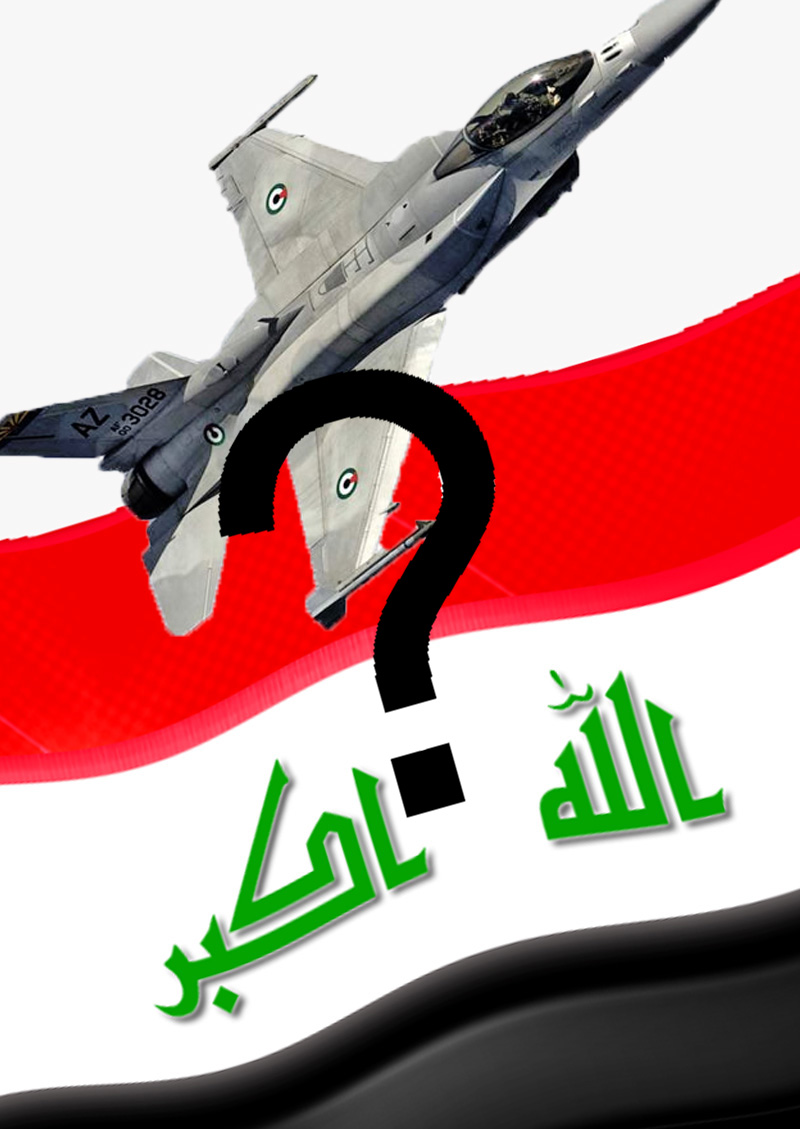
A key factor in the upcoming political and strategic decision of how many U.S. troops will remain in Iraq when the deadline for withdrawal arrives at the end of the year is, of course, whether and how well the Iraqi armed forces will be able to provide for the country's security.
And a critical component of Iraqi's national defense capabilities will be how well its air defense systems and fighter aircraft can defend and control its airspace and provide air sovereignty in case of an enemy attack.
As reported here, the Iraqi Air Force (IqAF), once the sixth largest air force in the world -- with well over 900 aircraft and with 40,000 men at 24 operating bases -- was pretty much destroyed during the "Persian Gulf War" (Operation Desert Storm), both in the air and on the ground. What was left of a once proud air force was flown to Iran to escape additional destruction.
The IqAF was so decimated that, when U.S. and Coalition Forces aircraft launched the air campaign at the start of Operation Iraqi Freedom in March 2003, not a single IqAF aircraft took to the skies to challenge the attacking aircraft -- a humiliating no-show.
With only 124 jet fighters left in his inventory, Saddam Hussein realized before the 2003 invasion that taking to the air to defend the homeland would be futile and ordered most of the fighter aircraft disassembled and concealed or buried in the desert sands, hoping to make them useless to and non-retrievable by the "invaders."
Although many of these aircraft have been found and excavated by U.S. forces in Iraq, none of the "exhumed aircraft" has seen service since the invasion.
Today, eight years after its demise, a new Iraqi Air Force is again rising from its ashes, assisted by the same powers -- mainly the U.S. -- that helped to destroy it.
A defeated and demoralized air force that started with zero operable aircraft and about 35 people in 2004 today has more than 160 aircraft and helicopters, including several C-130s, surveillance and reconnaissance aircraft in addition to light transport aircraft, trainers and a number of helicopters.
Several contracts for additional aircraft are being negotiated or executed. According to some reports, Iraqi officials hope to have an IqAF with around 500 aircraft and about 20,000 airmen by 2020.
However, conspicuously absent from the IqAF's inventory are jet fighter aircraft -- the dream of any air force and critical to the defense of the homeland.
Iraq has been eying the purchase of Lockheed F-16 fighter interceptors to fill this need, but it has been an on-off-on-again affair.
Back in March, 2010, Iraq submitted a request to the U.S. government for the purchase of 18 new F-16 fighter aircraft. Iraq would like to have 36 F-16s by 2020.
Also, at the time, the Government of Iraq signed an agreement with the U.S. for the training of 10 Iraqi Air Force pilots on the F-16.
Then, as recently as January of this year, it was reported that Iraq was "on the verge" of signing a $13 billion deal with the Pentagon for advanced weapons systems, including Lockheed Martin F-16 fighter interceptors.
Enter the "Arab Spring" and the events in Tunisia, Egypt, and elsewhere and, suddenly, the needs of the Iraqi people became more important than the needs of the Iraqi Air Force.
With Iraqis complaining about rampant government corruption, electricity and water shortages, lack of other services and Iraqis demanding more jobs and improved standards of living, Iraqi government spokesman Ali Dabbagh said that the planned purchase of 18, Block 52, F-16s was " postponed this year and the money has been diverted toward improving food rations for the poor."
Mohammed Khalil, a Kurdish MP and a member of parliament's finance committee said, "In the new draft budget for 2011 that was presented to us, $900 million was earmarked for the purchase of F-16s, which will be used to finance rations and social benefits." However, in early July, the Wall Street Journal reported that Iraq had once again "quietly" started negotiations to buy up to 36 F-16 aircraft -- the equivalent of two squadrons -- and other air defense systems "worth billions of dollars" and a purchase "Washington hopes will help counter Iranian influences and cement long-term ties with Baghdad after American troops pull out."
Apparently, the decision comes following an unexpected surge in Iraqi oil revenues that may have added an estimated $10 billion to the Iraq government's coffers and, yes, as the year-end U.S. troop withdrawal deadline looms.
With respect to the Iraqi economy and its ability to pay for such a large purchase, USA TODAY reports that "Foreign investment is beginning to pour into Iraq this year, fueled by a growing confidence in the country's stability."
As to how Iraq's security needs are coupled with the U.S. troop withdrawal, the U.S. has expressed growing frustration with Baghdad's foot-dragging and wants Iraq to "Dammit, make a decision."
Once a decision on continued U.S. troop presence is made, the picture on the extended F-16 package sale should become more clear, increasing U.S. confidence that Iraq will be able to defend itself -- especially against Iran -- and allaying U.S. concerns over Baghdad's ability to maintain tight security over the F-16s, their associated weapons systems and sensitive technology. A complete U.S withdrawal (including training, maintenance and logistics personnel), however, could have a negative impact on the IqAF's abilities to maintain and provide logistics support to such a sophisticated fleet of aircraft. It is unclear how soon Iraq's new fighter aircraft would enter service because of long production lag times, required training and the establishment of the necessary operation, maintenance and logistics infrastructure.
But for now, the sale of F-16's to Iraq may soon be "on" again---with some caveats and question marks.
Meanwhile, Dassault Mirage, Eurofighter Typhoon and other fighter aircraft are waiting in the wings -- or whistling in the wind?
Image: Courtesy author's grandson
